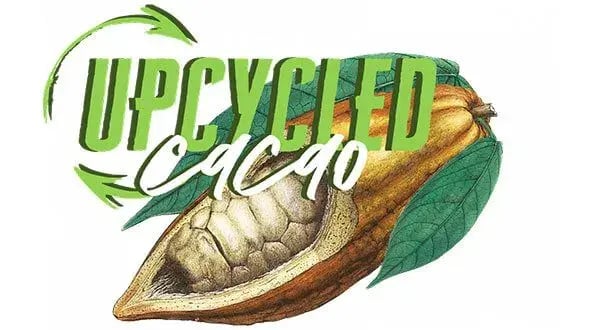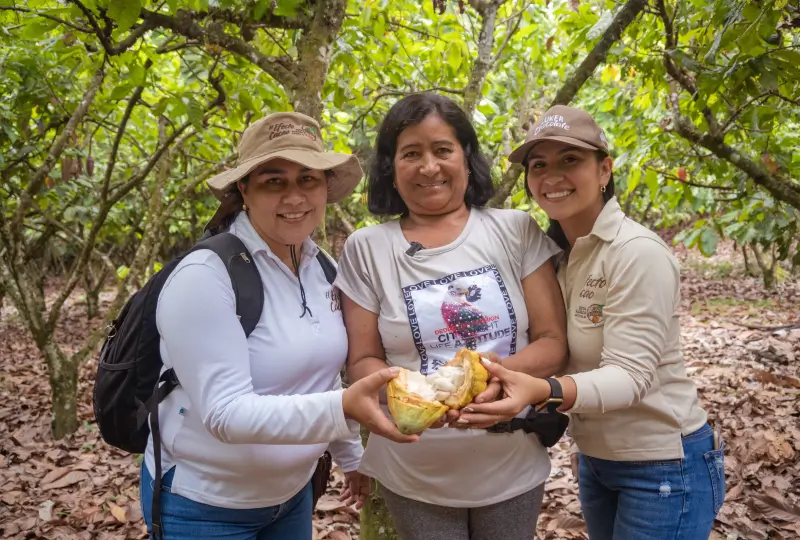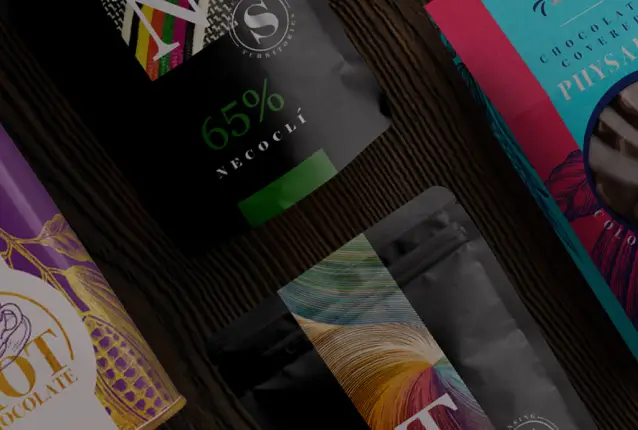The global chocolate industry continues to grow steadily, driven by the launch of novel products for consumers of all ages, increased demand for chocolate as a baking ingredient and rising awareness of healthy products that improve consumers' health. In addition, increased demand for functional foods, eco-friendly packaging and a more sustainable supply chain are expected to impact the industry positively.
Stay ahead of the game in the chocolate industry with our latest blog on key trends and product differentiation in chocolate for 2023. Read now!
According to Expert Market Research, the global chocolate market reached a value of approximately USD 127.7 billion in 2022 and is expected to grow at a CAGR of 4.4% over the next five years, reaching a value of USD 165.35 billion in 2028.
In 2023, the economic climate, including rising inflation prices, affects consumer behaviour. As consumers adjust to new routines and lifestyles, they seek experiences and products that bring comfort and improve their daily habits. Despite financial constraints, consumers are increasingly allocating a portion of their budget towards small indulgences and self-care to enhance their overall well-being and add meaning to their daily lives.
NATURAL & HEALTHY SWEETENERS
Consumers are increasingly focused on their health and wellness, which is reflected in their food choices. The trend towards nourishing options that support overall well-being is growing from mindful eating to physical activity. Functional foods that provide essential vitamins and address common health issues like stress, insomnia, and fatigue are in high demand. Explore the benefits of a healthier lifestyle and discover the power of functional foods.
Preventive health is becoming more important, and there is a particular interest in foods with adaptogens: plant extracts that help the body counteract the harmful effects of stress and restore physiological functioning. This explains the tendency to choose, for example, plant-based and natural sugars over artificial sugars, as outlined by Confectionery News,2022.
The health and wellness trend presents a world of opportunities for innovative, challenger, or purpose-driven brands. According to Innova Market Insights, consumers view functional ingredients that enhance physical health as a valuable investment.
An impressive 41% of surveyed respondents feel that health and wellness should drive food and beverage product development.
Challenger brands can find room for opportunity by producing chocolate products with adaptogens, both chocolate bars and hot chocolate products. The trend towards functional foods and the growing interest in health and wellness is leading to a demand for food and beverage products that offer health benefits.
Reconsidering the value and nutrition of food
Consumers' current commitment to their diet is based on buying fresh and locally produced products. Fresh and locally sourced products are typically seen as healthier because they are free of preservatives and artificial ingredients. At the same time, they are looking for affordable and accessible nutrition. To be able to meet this demand for high nutritional value at a reasonable price point, it is essential to innovate – to maximise efficiency and yields in production processes.
Another aspect to consider is plant-based food, which is increasingly taking precedence over animal products. This trend is often associated with healthier lifestyles and more ethical purchasing considerations.
According to Innova, 52% of global consumers now consider themselves flexitarians, incorporating both animal and plant-based proteins or other alternatives into their diet. Meanwhile, 60% of those surveyed say they prefer plant-based foods that showcase the natural fruit or vegetable rather than mimicking; and 40% prefer meat alternatives or non-dairy milk that retain the same taste as their traditional counterparts.
Also, a survey by The Good Food Institute found that 39% of U.S. consumers actively try to include more plant-based foods in their diets. Younger consumers, especially millennials and Gen Z, are driving the shift toward plant-based diets. A study by Nielsen found that over 60% of Gen Z consumers are interested in plant-based foods.
ETHICAL LIVING
As consumers become conscious of the impact of their actions on the environment, they seek brands that align with their values. A growing awareness of the environmental footprint of everyday consumption drives this trend towards ethical living. Today's savvy shoppers seek transparency and environmentally-friendly practices from the brands they support. With the growing recognition of wasteful consumption, consumers are becoming more mindful of the planetary cost of their habits and seeking out products that minimise that impact.
According to Innova's report, there is a growing interest in a circular economy model – where products' use and useful life are maximised through reuse, recycling, upcycling, etc. This approach informs the "Zero waste" concept currently trending in the industry, which seeks to combat food waste and support environmental sustainability. As a result, consumers are looking for ‘green’ brands with packaging alternatives that generate less waste and are environmentally friendly.

And 85% of consumers in the US, UK and China are seriously questioning their lifestyles and consumption to address climate change, according to a report by Wunderman Thompson.
Farming the future
As reported by Spoonshot, soil degradation has become a pressing global concern. As such, it is starting to emerge as an important area of focus in discussions on sustainable food since it is directly linked to food production and security.
Developing new farming systems that improve soil quality and sustainability will continue to drive renewed consumer interest in their food's origins.
These practices include regenerative agriculture, which consists of rehabilitating and stimulating soil fertility to keep it productive for as long as possible; plant breeding, which seeks, among other things, to produce food even in unfavourable environments; and vertical agriculture, which optimises space by growing plants inside buildings, houses or skyscrapers.
“Brands are starting to showcase their commitment to improving soil health even though gaining consumer buy-in may take a while. In the long term, we expect more food producers to look at investing in farming practices that improve soil health, which in turn can increase the taste and nutrition of food while also helping tackle climate change”, (Spoonshot, Trends 2023 & Beyond)
| Our in-depth analysis will provide a comprehensive look at the key factors influencing the chocolate industry in 2023. Download now to stay ahead of the curve in product differentiation within your chocolate portfolios. Review real product examples of these trends. Inspire your NPD plans. |
Consumers engaged in ethical living also pay close attention to the packaging of the food they buy. As Innova Market Insights suggests, on-pack messaging provides consumers with valuable information about the nutritional value of a product. The ingredients list and nutrition label is often the most important factors influencing purchasing decisions. By examining these elements, consumers can make informed choices about the food they eat and ensure that it aligns with their values.
EXPERIENCE MORE
The desire for unique, immersive and memorable experiences has grown among consumers in recent years. They seek opportunities to enhance their lifestyles and personal taste journeys, focusing on exploring new and exciting flavours. In this regard, food and beverage products play a key role, offering a chance to indulge in novel tastes and aromas. As a result, this trend continues to influence many consumers' purchasing decisions.

In the 'new normal', people seek special moments to celebrate – or different ways to escape from routine and share moments with their loved ones through their senses. That is why activities associated with the sense of taste take on a higher importance, as culinary creativity flourished amidst our collective confinement. This creativity will now be a major part of routines.
Though we’re facing global economic uncertainties due to rising inflation, consumers are not willing to sacrifice good taste and quality in their moments of indulgence. As a result, consumers are getting experimental and are increasingly looking for new flavours and textures in meals. 6 out of 10 consumers say they experience daily moments of happiness and reward themselves for having them, according to Innova Market Insights.
The challenge for the industry is to listen carefully to consumers by developing exciting products and flavours which do not compromise on quality. These products should also spark creativity to achieve foods or snacks with strong added value. Shoppers are looking for more than just convenience, such as product cost-benefit, freshness, health impact, ease of preparation and time savings.
Cyberspace, a natural driver
According to Innova, today's consumer is a digital devourer, which is why brands are beginning to harness the full potential of virtual connections to enhance real life through digital experiences. Young people are looking for entertainment, connection and social status, as well as the acquisition of memorable experiences that can be shared through their social networks.
In addition, the consumer's need for indulgence in their everyday lives and the nostalgia of the younger generation present market opportunities to explore. 71% of US consumers enjoy things that remind them of the happy days of their past and youth, according to Fona International.





















